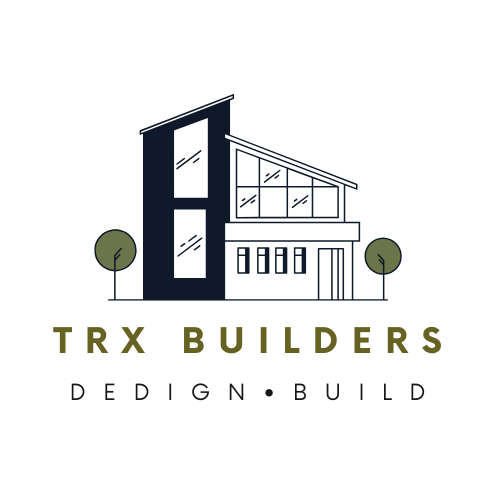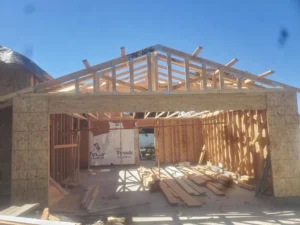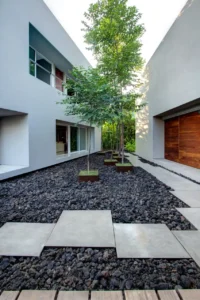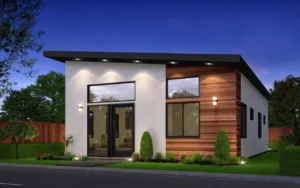As property values continue to rise and housing demand increases across California, homeowners are looking for creative ways to add more living space without moving. One of the most popular solutions is building an Accessory Dwelling Unit (ADU). Whether you want a guest house, rental unit, or additional space for a family member, building an ADU can significantly increase your property value and provide much-needed space.
But before you dive into this exciting project, you’re probably wondering: “How much does it cost to build an ADU in California?”
The answer to this question can vary widely depending on several factors, including the size of the ADU, location, design, materials, and whether it’s attached to your existing home or a separate structure. In this article, we’ll take an in-depth look at the costs associated with building an ADU in California and what factors contribute to the overall price. Let’s break down everything you need to know.
What is an ADU?
An ADU is a secondary living unit that is built on the same lot as a primary residence. It can be attached or detached and is often used for purposes like housing a relative, creating a rental unit, or adding a home office. ADUs come in all shapes and sizes, from small studios to larger two-bedroom units, and can be designed as separate tiny homes or integrated into existing structures, like a garage or basement.
California has made it easier to build ADUs in recent years by relaxing zoning laws and offering incentives for homeowners to add them. Whether you’re in Los Angeles, San Francisco, or a quieter part of the state, building an ADU could be an investment that adds value to your home and improves your lifestyle.
What Factors Influence the Cost of Building an ADU?
The cost of building an ADU in California depends on a number of factors. Here are the key elements that influence how much you’ll spend on your ADU project:
1. Size and Design
The size of the ADU is one of the most important factors affecting cost. Smaller units, such as studio apartments, will be less expensive to build than larger units with multiple bedrooms and bathrooms. A simple design with minimal customization is more affordable than a complex design with luxury finishes and features.
For example:
- Small ADUs (400-600 square feet): Ideal for a studio or one-bedroom unit, typically ranging from $100,000 to $150,000.
- Medium ADUs (600-800 square feet): Often a one- or two-bedroom unit, which could cost between $150,000 to $250,000.
- Large ADUs (800-1,200 square feet): These are more spacious units, potentially offering two or more bedrooms. They could cost anywhere from $250,000 to $500,000, depending on the design and features.
The more complex the design (e.g., custom layouts, additional rooms, or luxury materials), the higher the cost. If you’re adding a full kitchen, bathroom, and living area, the price will also increase compared to a simple, open-plan design.
2. Location
California’s housing market is incredibly diverse, and so is the cost of construction. The location of your property plays a significant role in determining the cost of building an ADU. In areas like San Francisco, Los Angeles, and other high-demand cities, construction costs will typically be higher due to labor costs, material prices, and permits.
- Urban Areas: Cities like Los Angeles and San Francisco can see construction costs exceeding $300 per square foot for ADUs, given the high demand for housing, skilled labor, and expensive building materials.
- Suburban and Rural Areas: In areas with lower housing costs, like some parts of the Central Valley or Inland Empire, construction costs may be closer to $200 per square foot or lower.
In addition, your location might require specific permits or adherence to stricter building codes, which can increase the cost of construction.
3. Type of ADU (Detached vs. Attached)
Whether your ADU is detached or attached to your primary home will also affect the cost. Detached ADUs are more expensive because they require additional foundation work, more building materials, and separate utility connections (water, electricity, sewage). They also require more complex site preparation, which can drive up the price.
On the other hand, an attached ADU—such as a garage conversion or adding a unit to your existing structure—tends to cost less because it shares walls, utilities, and foundations with the main house. Attached units also often require fewer permits, reducing overall costs.
4. Materials and Finishes
The materials and finishes you choose for your ADU will also significantly affect the cost. For instance, basic flooring options like vinyl or laminate will cost less than hardwood or stone tile. Similarly, stock cabinetry and countertops will be less expensive than custom, high-end finishes.
Other design considerations, such as energy-efficient windows, insulation, and appliances, can also impact the price. While investing in higher-quality materials will increase the initial cost, it can lead to lower long-term maintenance costs and better energy efficiency.
5. Labor Costs
Labor costs can vary significantly depending on the contractor and the complexity of your ADU project. On average, contractors in California charge anywhere from $50 to $150 per hour, but labor rates in high-demand areas may be higher.
Additionally, labor costs can rise if the project involves specialized trades like plumbing, electrical work, or structural engineering. If you’re making substantial changes to the foundation or adding plumbing and electrical systems, these additional costs can add up quickly.
6. Permitting and Regulations
Permitting and local regulations play a crucial role in determining the cost of building an ADU. While California has relaxed some of the regulations around ADUs, you’ll still need to apply for permits from your local zoning office and comply with building codes.
In some cities, the cost of permits can be significant, and delays in the approval process can add to the overall cost. Be sure to factor in permit fees and any required inspections when planning your budget.
Average Cost of Building an ADU in California
Given all the variables, the cost of building an ADU in California generally ranges from $100,000 to $500,000 or more. Here’s a rough breakdown:
- Basic ADU (400-600 square feet): $100,000 to $150,000
- Medium ADU (600-800 square feet): $150,000 to $250,000
- Large ADU (800-1,200 square feet): $250,000 to $500,000
For example, converting a garage into a small ADU could cost around $100,000, while building a new detached ADU with high-end finishes may cost upwards of $400,000.
How to Save Money on Your ADU Project
While building an ADU is a significant investment, there are ways to reduce costs without sacrificing quality:
- Choose a Simpler Design: Keep the layout straightforward and avoid unnecessary changes to the structure. The more complex the design, the higher the cost.
- Use Standard Materials: Opt for cost-effective materials like laminate countertops or vinyl flooring instead of high-end custom finishes.
- Consider an Attached ADU: If possible, consider building an attached ADU, such as converting a garage or basement. These tend to be less expensive than detached units.
- Do Some Work Yourself: If you’re handy, consider tackling some aspects of the project yourself, such as painting or landscaping. Be sure to consult with a contractor for tasks involving plumbing or electrical work.
Build Your ADU with Expert Guidance
Building an ADU in California can be an excellent investment, offering you additional living space and potential rental income. While the cost of construction can vary depending on the size, design, location, and materials you choose, understanding these factors will help you budget appropriately for your project.
At TRX Builders, we specialize in designing and constructing custom ADUs that enhance your property’s value and functionality. Contact us today for a consultation, and let’s get started on bringing your ADU vision to life!



